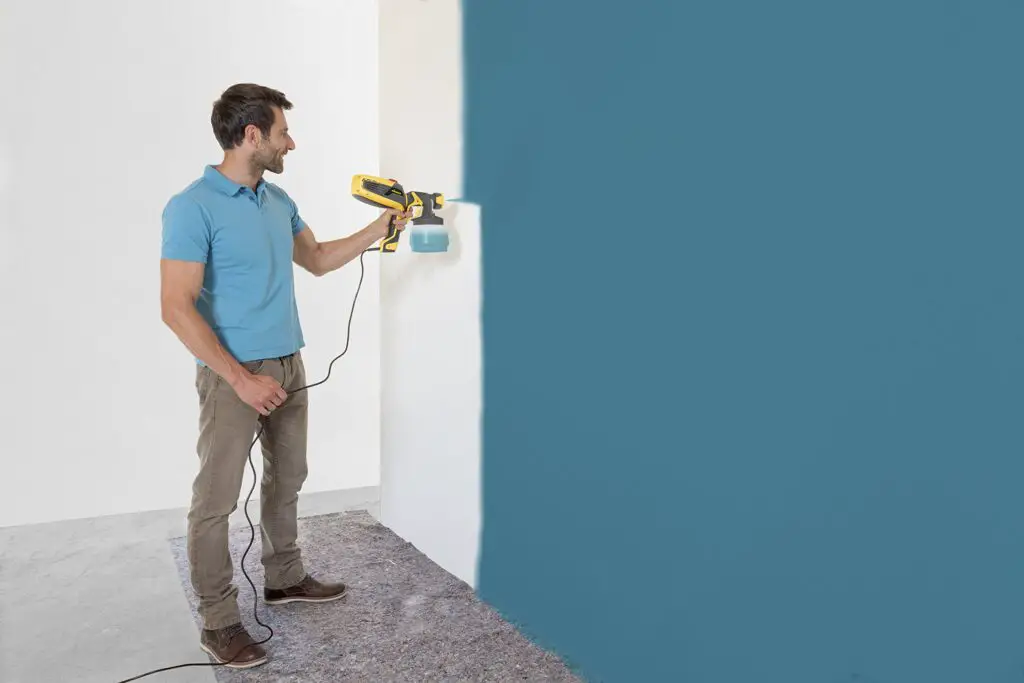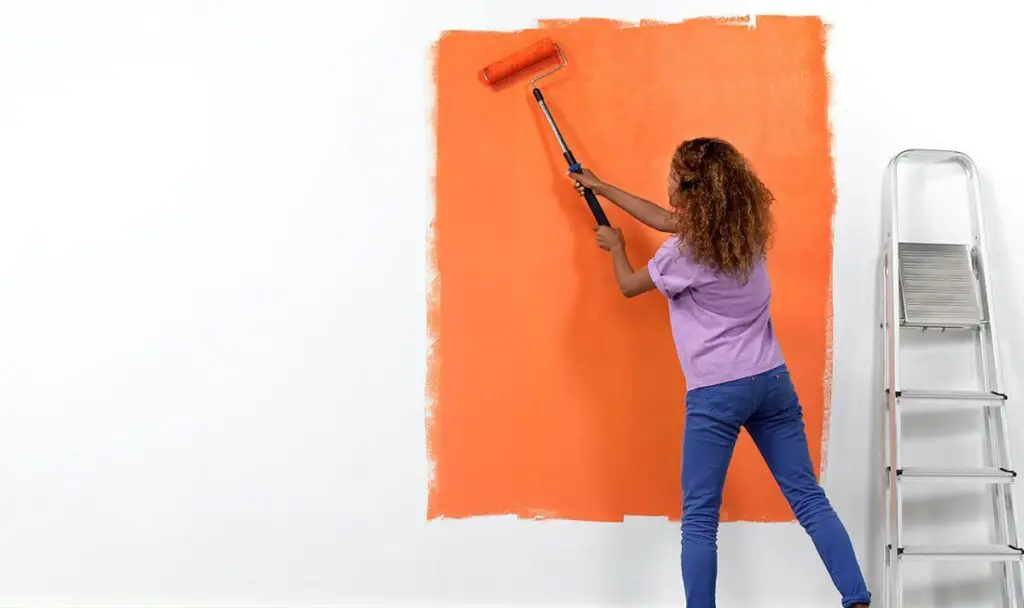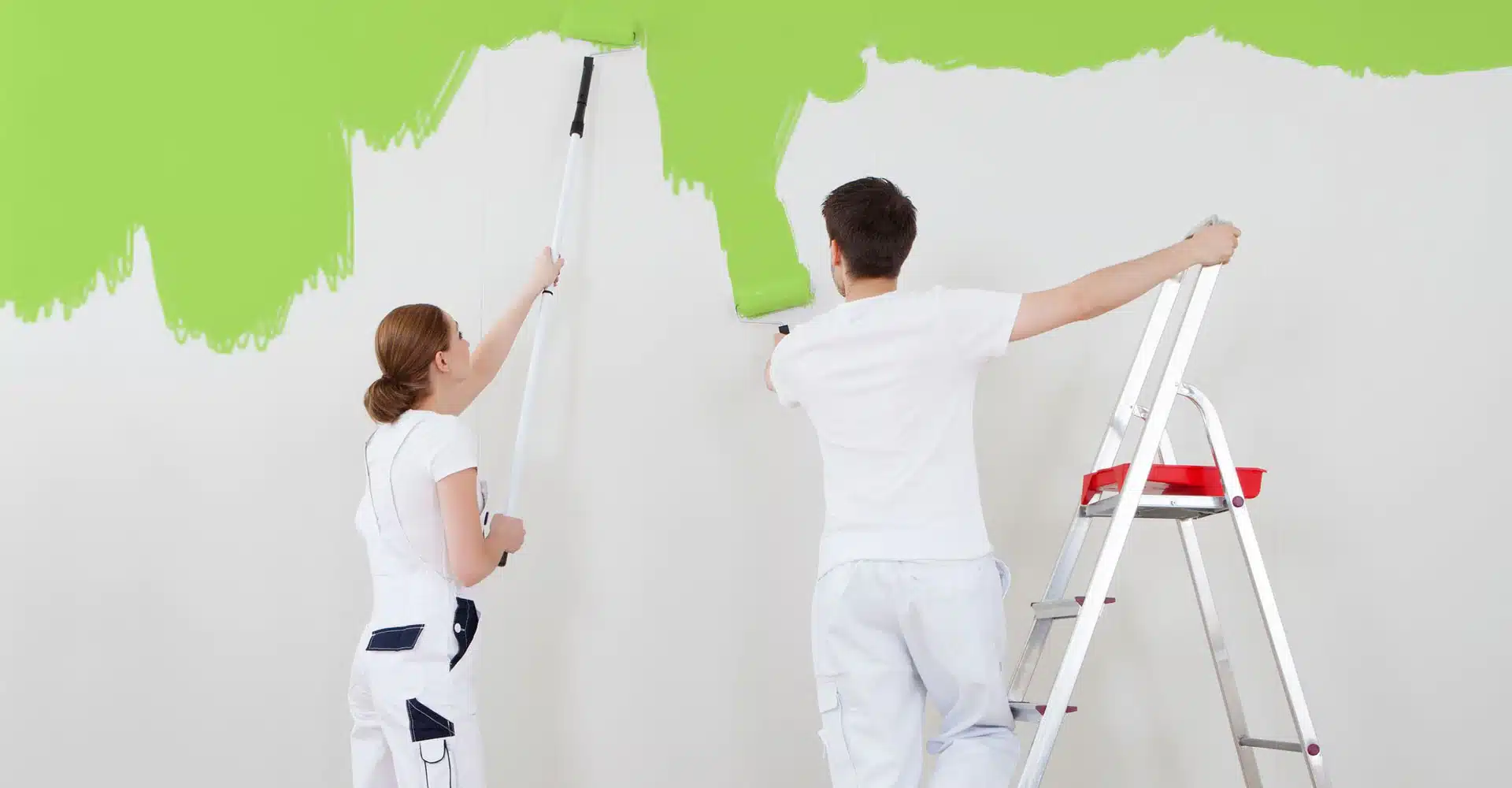How Long Does It Take Interior Paint To Dry
Introduction
How Long Does It Take Interior Paint To Dry: Whether you’re painting your walls or making up a room, drying time is essential for planning and success.
Interior paint drying time depends on the paint kind, room temperature, humidity, and ventilation. The majority of interior paints dry within 1-2 hours. However, this is only the early drying step, and the paint may still be damaged or smudged. Latex or water-based paints are the most common types used for interior walls, and they typically have a faster drying time compared to oil-based paints. This waiting period allows the paint to fully cure and ensures a smooth and even finish.
Factors such as temperature and humidity can significantly affect the drying time of interior paint. Higher temperatures and lower humidity levels can accelerate the drying process, while cooler temperatures and higher humidity can prolong it. It’s important to consider these factors when planning your painting project and adjust accordingly.

How long should paint dry before using room?
Allow four hours for water-based paint to dry and 24 hours for oil-based paint. Plan to let the room dry and air out before reentering before painting.
How long should paint cure before a room can be utilized again is a common question. Paint drying time depends on the type of paint, room temperature and humidity, and ventilation. To guarantee a smooth and durable finish, let the paint dry before utilizing the room.
The drying time of paint can range from a few hours to several days. Water-based paints, such as latex or acrylic, tend to dry faster than oil-based paints. In general, water-based paints can be touch dry in about 1-2 hours and can be recoated after 4 hours.
On the other hand, oil-based paints take longer to dry and cure. Their drying time might be 6-8 hours and up to 24 hours before recoating. Oil-based paints generate significant fumes after drying, thus ventilation is essential.
The temperature and humidity of the room can also affect the drying time of paint. Rising temperatures and lower humidity hasten drying, whereas falling temperatures and increased humidity hinder it. To dry paint, paint in a setting between 50-85 degrees Fahrenheit and 15% humidity.
In addition to paint type and ambient factors, paint layer thickness can affect drying time. Thick paint coats dry slower than thin ones. The paint manufacturer’s specified coats and drying times must be followed.
How do you make interior paint dry faster?
Keep the Air Moving
It may sound like common sense, but having good air circulation will speed up the drying process. Opening a window is a great way to keep air moving and vent the fumes from the paint. You can also keep fans running and pointed at the walls to speed up the drying process.
There are several methods you can use to make interior paint dry faster. If you need to finish a painting project quickly or speed up drying, these methods can help. These suggestions will help your paint dry quickly and evenly, letting you go on to the next phase.
One of the easiest ways to make interior paint dry faster is to increase the airflow in the room. This can be done by opening windows and doors, using fans, or turning on the air conditioning or heating system. By circulating the air, you can help to evaporate the moisture in the paint more quickly, reducing the drying time. Another method to speed up the drying process is to use a dehumidifier. This can be particularly useful in areas with high humidity levels or during humid weather conditions.
Using a hairdryer or heat gun can also help to accelerate the drying time of interior paint. By directing warm air onto the painted surface, you can speed up the evaporation of the water in the paint. However, extreme heat can bubble or blister paint, so use heat sources carefully.
Choosing the right type of paint can also affect the drying time. Some paints are specifically formulated to dry faster than others. Look for paints labeled as “”quick-drying”” or “”fast-drying”” to ensure that your paint dries in a timely manner.
When can I put things on the wall after painting?
It’s best to wait at least 48 hours before hanging photo frames and other items on the walls. Placing objects on freshly painted horizontal surfaces like fireplace mantels and window sills should be refrained from for about a week.
After painting a room, many people are eager to start decorating and putting things back on the walls. However, it is important to wait for the paint to fully dry before hanging anything up. The drying time can vary depending on several factors, such as the type of paint used, the temperature and humidity of the room, and the thickness of the paint coat. In general, it is recommended to wait at least 24 hours before putting things on the wall after painting.
The type of paint used can affect the drying time. Oil-based paints typically take longer to dry compared to water-based paints. This is because oil-based paints contain solvents that evaporate more slowly. If you have used oil-based paint, it is best to wait at least 48 hours before hanging anything on the wall. On the other hand, water-based paints dry faster and may be ready for decorations within 24 hours.
The temperature and humidity of the room can also impact drying time.
Warmer temperatures and lower humidity levels can help paint dry faster. If the room is cold or damp, it may take longer for the paint to fully dry. It is important to ensure that the room is well-ventilated during the drying process to help speed up the drying time.
The thickness of the paint coat can also affect drying time. If you have applied multiple coats of paint or a thick layer of paint, it may take longer for it to dry. Thicker layers of paint take longer to dry because the solvents in the paint need more time to evaporate. It is important to follow the manufacturer’s instructions regarding the recommended drying time for the specific paint product you have used.
It is best to wait at least 24 hours before putting things on the wall after painting. The drying time depends on the paint kind, room temperature and humidity, and paint coat thickness. Before hanging anything on the wall, let the paint dry to ensure that your decorations will stick and not damage the surface.
How many coats of paint needed for interior?
two coats
How many coats of paint do I need? Generally, you will want a minimum of two coats of paint – this is a good rule of thumb for any wall or ceiling you’re painting. You’ll rarely get a seamless finish from just one coat of paint, and even if you do, coverage isn’t the only goal when it comes to painting a room.
When it comes to painting the interior of a room, one of the most common questions that arises is how many coats of paint are needed. The answer to this question can vary depending on several factors, including the condition of the walls, the color of the paint, and the desired finish. In general, however, it is recommended to apply at least two coats of paint for a professional-looking result.
The first coat of paint serves as a base layer
Helping to even out the surface and provide a good foundation for the subsequent coats. It is important to ensure that the first coat is applied evenly and allowed to dry completely before moving on to the next coat. This will help to prevent streaks and uneven coverage.
Once the first coat has dried, it is time to apply the second coat. This coat is where the true color and finish of the paint will start to come through. Applying a second coat helps to ensure that the color is rich and vibrant, and that any imperfections or missed spots from the first coat are covered.
In some cases, a third coat of paint may be necessary. This is particularly true when painting with darker colors or when trying to achieve a specific finish, such as a high gloss or metallic look. A third coat can help to enhance the depth and richness of the color, as well as provide additional durability and protection.
It is important to note that the number of coats needed can also depend on the type and quality of the paint being used. Higher quality paints often provide better coverage and may require fewer coats. Additionally, if the walls are in poor condition or have a lot of imperfections, additional coats may be needed to achieve a smooth and flawless finish.
How much area does 1 Litre of paint cover?
how much area will be covered by 1 litre of paint. As a general rule of thumb, let’s consider that 1 litre of paint will cover around 130 sq ft.
When it comes to painting a room or a surface, one of the most common questions that arises is how much area can be covered by a litre of paint. The answer to this question can vary depending on several factors, including the type of paint being used, the surface being painted, and the method of application. However, on average, a litre of paint can cover approximately 10 to 12 square meters of surface area.
The coverage area of paint can be influenced by the type of paint being used. Different types of paint have different levels of opacity and thickness, which can affect how much area can be covered with a litre of paint. For example, oil-based paints tend to have a higher coverage area compared to water-based paints. This is because oil-based paints are generally thicker and more opaque, allowing for better coverage with less paint.
The surface being painted also plays a significant role in determining the coverage area of paint. Smooth surfaces, such as plastered walls or metal surfaces, tend to require less paint compared to rough surfaces like textured walls or wood. This is because rough surfaces tend to absorb more paint, resulting in a lower coverage area. Additionally, surfaces that have been previously painted may require more paint to achieve full coverage, especially if the previous color is significantly different from the new color.
The method of application can also impact the coverage area of paint.
Using a brush or roller to apply paint generally provides better coverage compared to using a sprayer. This is because brushes and rollers allow for more control over the amount of paint being applied and ensure that the paint is evenly distributed. On the other hand, sprayers can result in overspray and uneven coverage, which may require more paint to achieve the desired result.
While the coverage area of paint can vary depending on several factors, on average, a litre of paint can cover approximately 10 to 12 square meters of surface area. It is important to consider the type of paint, the surface being painted, and the method of application when estimating the amount of paint needed for a project.
For latex or water-based paints, the drying time can range from 1-2 hours, but it may take up to 30 days for the paint to fully cure. On the other hand, oil-based paints typically have a longer drying time, usually around 6-8 hours, and may take up to 7-10 days to fully cure.
It is important to allow sufficient drying and curing time for interior paint to ensure a durable and long-lasting finish. Rushing the drying process can result in poor adhesion, uneven finish, or even damage to the painted surface. Therefore, it is recommended to follow the manufacturer’s instructions and allow the paint to dry and cure properly before subjecting it to any stress or cleaning.
Are there any factors that can affect the drying time of interior paint?
Yes, there are several factors that can affect the drying time of interior paint. One of the main factors is the type of paint used. Different types of paint, such as latex or oil-based, have different drying times. Latex paint tends to dry faster than oil-based paint. Additionally, the thickness of the paint layer can also impact drying time. Thicker layers of paint will take longer to dry compared to thinner layers.
Humidity is another factor that can affect drying time. High humidity levels can slow down the drying process, while low humidity levels can speed it up. It is important to consider the humidity levels in the room where the paint is being applied and adjust accordingly.
Temperature is also a significant factor. Warmer temperatures generally result in faster drying times, while cooler temperatures can slow down the process. It is recommended to paint in a room with a temperature between 50 and 85 degrees Fahrenheit for optimal drying.
Can you provide any tips or techniques to speed up the drying process for interior paint?
When it comes to speeding up the drying process for interior paint, there are several tips and techniques that can be helpful. One important factor to consider is the temperature and humidity levels in the room. Higher temperatures and lower humidity can help paint dry faster.
Another technique to speed up the drying process is to ensure proper ventilation in the room. Opening windows and using fans can help circulate air and remove moisture, allowing the paint to dry more quickly.
Additionally, using a paint additive or drying accelerator can be an effective way to speed up the drying process. These products are specifically designed to reduce drying time and can be mixed with the paint before application. However, it is important to follow the manufacturer’s instructions and guidelines when using such additives to ensure proper application and drying.
Is there a specific type of interior paint that dries faster than others?
Yes, there are certain types of interior paint that tend to dry faster than others. One such type is latex paint, which is known for its quick drying time. Latex paint is water-based and dries relatively quickly, usually within a few hours. This makes it a popular choice for interior painting projects where time is of the essence.
Another type of paint that dries faster is acrylic paint. Acrylic paint is also water-based and dries quickly, often within an hour or two. It is commonly used for interior painting projects that require a fast turnaround time.
On the other hand, oil-based paints tend to have a longer drying time compared to latex and acrylic paints. Oil-based paints can take anywhere from 8 to 24 hours to dry, depending on the specific brand and conditions. Therefore, if you are looking for a paint that dries quickly, it is recommended to choose a latex or acrylic paint.
Are there any precautions or recommendations to follow after applying interior paint to ensure proper drying?
After applying interior paint, it is important to take certain precautions and follow recommendations to ensure proper drying. This will help to avoid any potential issues and ensure a smooth and long-lasting finish.
Firstly, it is crucial to allow sufficient drying time before touching or moving any painted surfaces. This can vary depending on factors such as humidity, temperature, and the type of paint used. It is generally recommended to wait at least 24 hours before touching or placing any objects on freshly painted surfaces. This will prevent smudging or damaging the paint and allow it to fully cure.
Secondly, it is advisable to avoid exposing freshly painted surfaces to excessive moisture or humidity. This can interfere with the drying process and result in uneven drying or even paint damage. It is recommended to keep windows closed and use dehumidifiers or fans to maintain a dry environment during the drying period.
Additionally, it is important to avoid applying any additional coats of paint or touching up areas until the initial coat is completely dry. This will ensure a consistent finish and prevent any issues with adhesion or color variation. It is also recommended to follow the manufacturer’s instructions regarding recoat times and any specific recommendations for the type of paint being used.

Conclusion
Overall, the drying time for interior paint can vary depending on several factors. In general, most interior paints will dry to the touch within 1-2 hours. However, it is important to note that this is just the initial drying time and the paint may still be susceptible to damage or smudging. To ensure that the paint fully cures and becomes durable, it is recommended to wait at least 24 hours before applying a second coat or allowing heavy traffic in the painted area.
One of the main factors that can affect the drying time of interior paint is the type of paint used. Different types of paint, such as latex or oil-based, have different drying times. Latex paint tends to dry faster than oil-based paint, usually within 1-2 hours. On the other hand, oil-based paint can take longer to dry, often requiring 6-8 hours or more. It is important to check the manufacturer’s instructions for the specific paint being used to determine the recommended drying time.
The temperature and humidity levels in the environment can also impact the drying time of interior paint. Higher temperatures and lower humidity levels can accelerate the drying process, while lower temperatures and higher humidity levels can slow it down. It is generally recommended to paint in a well-ventilated area with a temperature between 50-85 degrees Fahrenheit and a humidity level below 50% for optimal drying conditions.
Interior paint can dry in 1-2 hours for latex and 6-8 hours for oil-based. The type of paint and environmental temperature and humidity can also effect drying time. You can guarantee your inside paint dries properly and lasts by considering these aspects and following the manufacturer’s directions.








